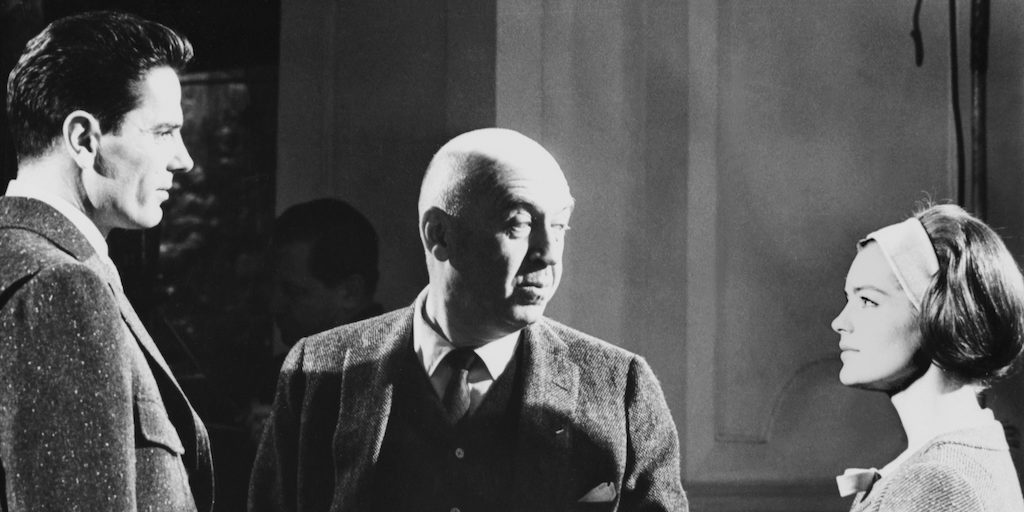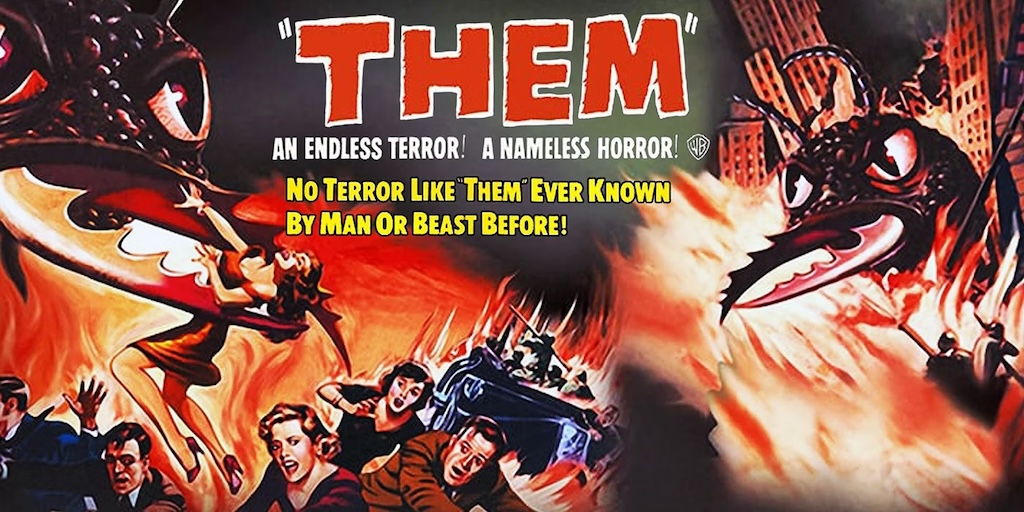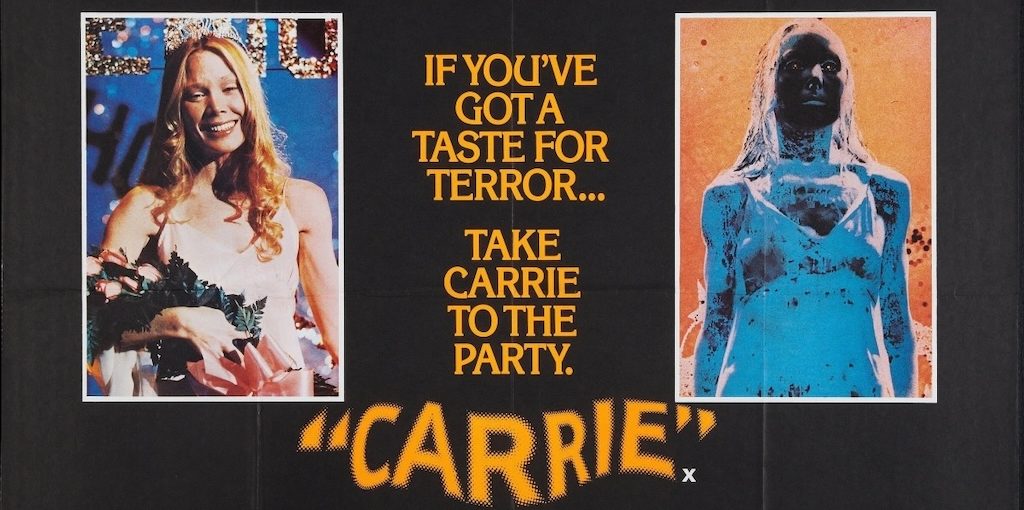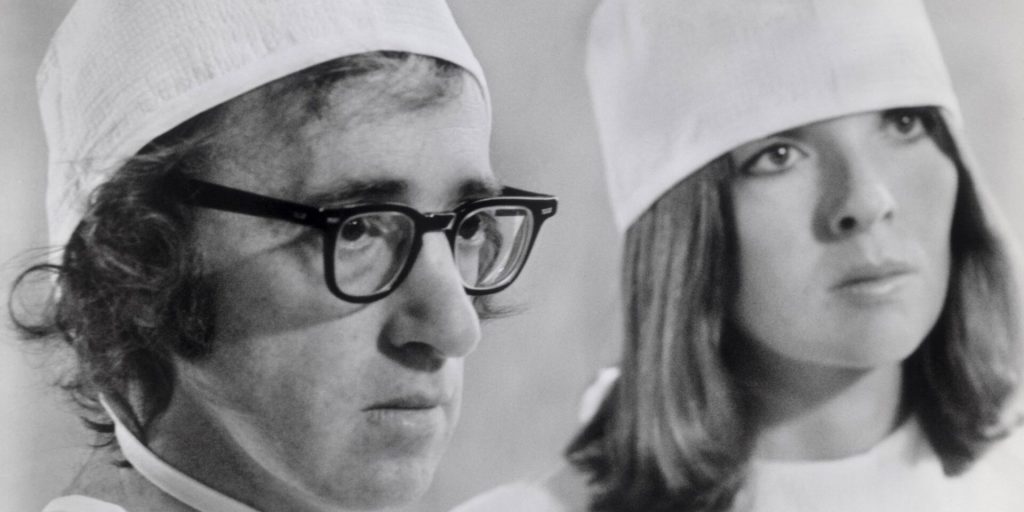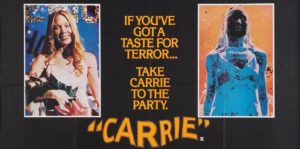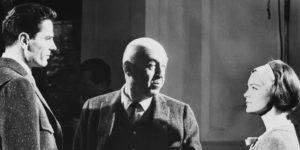“I have manifested,” said Lucavski, “That, deep down, everything is possible. In sum, all reasoning, regardless of the consequences it may lead to are unbelievable, must be maintained, as long as it is logic. Most men never discover the truth, because it already seems too heavy for them to go out and seek it, or because the results of their reflections seem impossible. But what today is impossible, tomorrow will be obvious. Yes, it is even conceivable that most things that happen are only possible because people are incapable of foreseeing them.”
From The Two Sicilies, by Alexander Lernet-Holenia
Throughout the evolution of the Western civilization there are historical structures that, past their twilight, decadence and extinction continue to survive as forms or manners that create knots of sense (1) which, at the same time, found or sustain emblematic figures of thought and poetry.
(1) It is time to say here that when we employ “knot of sense” we do so utilizing a mythical image: the Gordian knot. This traditionally configures an in-scale labyrinth. It was presented to Alexander the Great when he was willing to end his conquests. Whoever untied the knot it would be given the conquest of the World. Alexander cuts it with his sword, and shortly after his conquests stop; in the border with India, as we should take into account. From there comes the dilemma that the mythologeme mentions as follows: cyclically, that knot can be cut or one can try to untie it; from there come two positions that are emblematic about the hermeneutical operation. This theme, of course, deserves an extensive and separate treatment.
The Egyptian, the Alexandrine, the Byzantine, and the Austro-Hungarian are those figures.
Of all of them, the Austro-Hungarian is a profound figure in the making of films practically since its very invention.
So it is, in certain constitutive elements in Fritz Lang’s body of work; Max Ophuls’ entire body of work and, now as a continuation of the Austro-Hungarian by other means, and in other means, Von Sternberg’s body of work.
A second articulation of this element appears, after the first and early self-awareness, in the works of Joseph L. Mankiewicz and Otto Preminger; although certain elements or manners of the Austro-Hungarian can be traced as well ––although in a more occasional or perhaps biased way–– in films by George Cukor, Ernst Lubitsch and Douglas Sirk; and partially degraded in the films of Billy Wilder. (2)
(2) For instance, what other thing can films like Sunset Blvd. (1950) be, more than the already early museumification and petrification of this Austro-Hungarian element, turned into a mere set, an “atmosphere.”
As for the body of work of Spanish filmmaker Luis García Berlanga there was an extensively declared Austro-Hungarian element; but as time went by we have been convinced that except ––and perhaps–– in his earliest films, that was rather wishful thinking, an attempt to pass wishes for realities.
The cinema of his later years, immersed in the so called “uncovering”, buried his first and better intentions.
We have characterized the “Austro-Hungarian element” of Cinema as an early hint of decadence. This nuance of an early decadence has to be pointed out and examined now taking into account the repercussion experienced after the self-awareness within that referred sphere where cinema operates.
Self-awareness, in its knowledge that it knows and what it knows, led inevitably that both film auteurs that already were developing a body of work before Citizen Kane (1941) and those who started building their bodies of work after this film, had to reorder or relocate their respective mundus and perspectives after this early, premature and even “inappropriate” demanding uncovering that gave place to what we call “The Cinema’s Quia.”
This Quia gave room ––and shelter–– to a parallel and inevitable apparition of a curing situation; a care of the already self-aware demands in the way Cinema operates. This cure was refracted or divided almost immediately between a cure-custodian and a cure-collector. The former leads to a thought of Cinema at the hands of the audience’s Quia; the latter, leads to cinephilia and its unrelenting fall into a technified difference, seen as the mere collecting of posters, trivia, revival houses, et al.; to sum it all up, the trivialization of cinema as the last avatar of the cure-collectionist.
The Cure-Custodian then appears before us as an organizer and gives shelter to the audience’s Quia as a community expecting a possible relocation of their dwindling decisive forces. It can also be described as putting the community off-frame, something that, although cinema set its mind to it from its beginnings with self-awareness, this putting off-camera became transparent in its demand through the apparition of the audience’s Quia.
Thus, this Quia is putting a community or the possibility of a community in an off-frame that receives the knowledge of cinema, both the knowing that it knows and the knowing of what it knows, into a demanding position.
To underpin this cure-custodian, film auteurs, with the time division applied above, organized in their demanding procedure as follows: those who already had an ongoing body of work diffused the transparency of their films, problematizing them. Those who started to shoot after Citizen Kane started from diegeses ostensibly more complex than those employed at the kingdom of transparency stage, achieving this way to compact the demanding operation of cinema towards the audience’s Quia.
Hitchcock’s procedure in Shadow of a Doubt (1943) or Lifeboat (1944) is exemplary when it comes to the first group. Films such as Laura (1944) by Otto Preminger or Johnny Guitar (1954) by Nicholas Ray, are examples of the second group.
But also the apparition of this early ––now seen as rough–– self-awareness with Citizen Kane made that certain territoriality potentialities that were maintained in a rigorous situation of symmetrical transparence during the first articulation of the classic period, to also jump “into sight” as for their demanding operation about the audience’s Quia.
Out of all these territorialities, none jumped into self-awareness so provided of all their intact emblematic attributes like the Austro-Hungarian, since it kept almost complete their different nuances and manners, also supported, and in parallel, by a symmetrical preservation for extra filmic elements. We will try to explain ourselves.
What we denominate as an “Austro-Hungarian element” had, throughout prior decades (1920’s-1940’s), a parallel and symmetrical extra-filmic avatar. The paintings of Kokoshka; the sculptures of Wotruba; the fiction and essays of Hermann Broch, Robert Musil, Helmitio von Doderer and Elias Canetti among others; the architecture of Adolf Loos; and the music of dozens of composers ––many of them in a permanent state of diaspora–– articulated this knot of sense.
So it happened with the “discovery” around those years of works that had maintained a will of random anonymity, as are, exemplary, those by Otto Weininger and Karl Kraus or ––in the “Trieste-born branch”–– the works by Carlo Michelstaedter or Scipio Slateper; and naturally also those by Franz Kafka as their locus mirabilis; even though this work was circular in a posthumous way and in a rather erroneous form.
This network of works, figures and manners of thought and poetry gave place to a parallel articulation of themes and motifs that Austro-Hungarian film auteurs refugees in Hollywood had exemplary organized; configurating, upon the appearance of self-awareness, a rich and strange world in its fascinating anachronism. Let us remember once again the sense in which we employ the concept of “anachronism”: something out of the usual time. Not necessarily returning into the past, but also turning to a controversial agonic present and even with a perspective on the future that seemed problematic.
A certain kind of cultural journalism has spoken to exhaustion about “Hollywood’s German colony”, but did not establish ––as the custom dictates–– any hermeneutic point of view, since such a form of contemporary banalization cannot ever decide anything, only augmenting the flatus vocis and the rubble.
This German element in Hollywood was predominantly Austro-Hungarian. The presence there of not just film directors, but screenwriters, comedy makers, set designers, costume designers, choreographers, and musicians of that origin, is something unquestionably ostensible.
Although many of them have been born within the German geographical-historical worldliness or determination as a territoriality or, better said, as an ecumene, they decided or chose the Austro-Hungarian.
Throughout the thirties in the past century, Hollywood became a shelter for elements coming from Germany and the countries that conformed the abolished Austro-Hungarian Empire; half or more were of Jewish origin. They all have emigrated on account of a fierce opposition ––although drawn with different controversial nuances–– to Nazism. Around the same time, Nazism and “Germanism” (or that which is German) had become almost synonymous, that is, they had created a knot of sense. The fair pertinence, or not, of such an imaginary homologation can be overseen in this place. What is important to our goal is to know how this knot of sense was resolved. That “how” was possible, as we sustain here, by a recovery of the Austro-Hungarian element set into motion ––and into stage–– by all of them, to symbolically throw away the “Germanism” that still harassed them like a ghost.
“You can come out of every labyrinth by going up”, says our own Marechal; from there comes that the “up” was the arrival of all that cultural element in exile towards vivid and purifying waters offered by the Austro-Hungarian territoriality.
Exemplary to this matter is the resolution taken during those years from outside cinema and within Europe, coined by two German-speaking Jewish authors, nostalgic for the Austro-Hungarian abolished as imperial politics: Walter Benjamin and Joseph Roth. The former born in Berlin, the latter in one of those final frontiers of the Austro-Hungarian Empire that dimly borders with what today is Poland and with what became once again Russia.
In that “desert of the tartars”, last mark of a frontier that Dino Buzzati emblematized in a sui generis manner, Roth was born. First, a Jew more or less liberal and left-ish, which after the defeat and disappearance of the Empire became its apologist during his exile. All through an exile where bohemia is confused with errant aristocratism and had almost all the cities in mitteleuropa as a scenery before settling in Pairs, the author of The Radetzky March and The Emperor’s Tomb (3) was equaling Empire with Catholicism, a faith which he converted to during his pilgrimage years…
(3) “The Radetzky March” is the title of a military march composed by Johann Strauss (senior) in 1848 for the Austro-Hungarian Imperial Army and got to be the empire’s anthem, and whose title referred to one of its most celebrated generals. The Emperor’s Tomb is a church of the Order of the Franciscans, located in Vienna, where those integrating the Hapsburg dynasty have been buried for centuries.
In a scholarly and exemplary display, French writer Louis Vedrines tells the excited and exciting burial of Roth. “If his death was sordid, the funeral, despite the lousy ‘service’, was worthy of a sovereign. It was at the Thiais Cemetery on May 30th (1939); an immense group of proscribed citizens from Germany, Austria and the faraway lands of the old Empire. The illustrious and the unknown rubbed shoulders with each other; the rootless for which Roth had made such an effort, within the limits of his means (and perhaps even more so), to make the exile less bitter; because his compassion had extended to all, whatever were their beliefs and opinions. Many of the women that passed by Roth’s life gathered around the grave: Andrea Magna Bell, actress Sybil Rares, and a mysterious Lithuanian, Sonja Rosenbaum (…) whom no one ever heard about. Count Trautmannsdorf, who represented Otto of Habsburg, posed upon the grave a wreath where the ruban, bearing the colors of the dynasty, yellow and black, carried a simple name: “Otto”.
“Without a doubt, that imperial homage to the small polish Jew would have been considered by Roth as the dream crowning of his singular spiritual itinerary” (4)
(4) Louis Vedrines: Joseph Roth ou la Nostalgie de L’Empire. NouvelleEcole Nº 44.
The case of Walter Benjamin has been so squeezed, manipulated and groped that some sort of hermeneutical sanitary cord must be formed around it to salvage the thoughts of a figure, which was “made saying” any kind of thing, and even more so by their supposed “trustees.” (5)
(5) About these embarrassing posthumous handling there is ––and fortunately so–– a whole critical material that sets the record straight. Among them we recommend: Walter Benjamin and his elective affinities, an essay by Rafael Gutiérrez Girardot, which forms part of the Cuestiones collection, F.C.E. 1994
Here we only want to point out, tentatively, how the fragmented span of Benjamin’s writings is vertically permeated by the Austro-Hungarian. His sometimes labyrinthine and certainly confuse speculations about collectionism, the loss of the aura in the technification period ––a poorly understood concept, even disfigured, out of ignorance or mendacity––; what was pointed out about the flâneur and the gambler as displaced dandies; about Baudelaire as the one who coined modernité are, at least, wisps, sparks of brief illuminations, that do not cease to illuminate and should be rescued and sheltered ––cured–– in a precise and precious manner.
But all of them, we repeat, are seasoned by the Austro-Hungarian element and refract in Otto Preminger’s first film (6), Laura.
Laura is, liminally, the displacement of the bejaminian collector to a different territoriality acting as a refraction point of his scholar and preservation operations. Laura’s Waldo Lydecker (Clifton Webb) is 1) the collector of an abolished beauty turned epicene writer; 2) a flâneur turned ironically into an urban sedentarian; 3) the baudelaireian dandy provided of an ostentatious fortune, product of his labor as the columnist of a major newspaper; 4) the little domestic tyrant out of a group of mundane and demimondaine creatures which he manipulates ––or thinks so–– to his beck and call; 5) and finally, the bloodless collector of a cold beauty of which he attempts to become, tardily, a “creator”; and is with that goal of tardy “pygmalionism” that he starts and ends the story about his disgrace.
After a long time of preserving the creations of others ––like the profond Charles Foster Kane––, and after a successful career as a venomous writer for hire as an arbiter for the semi mundane taste. Waldo Lydecker attempts to create, almost out of nowhere, a perfect woman, Laura.
That indicated “almost” is summarized in that Laura Hunt, the bodily support, is and will continue to be that former Petarch-esque Laura, now made a “model” at an advertising agency, a woman that does not want nor need the loftiness of a vicarian transmundanity. The cynic that Waldo was, or thought himself out to be, is cyclically transmuted into an agonizing romantic within a bourgeois Platonism.
(6) Preminger directed several films before Laura; but, like our very own Bioy Casares (with his first works), the director prevented their release or re-release. They are Die Grosse Liebe (1931), the only film he shot in his native Vienna; Under Your Spell (1936); Danger-Love at Work (1937); Margin for Error (1943) and In the Meantime, Darling (1944). This obsession made, it seems, that he even got to buy the negatives so he could destroy them.
N.B.: Our own Carlos Mastronardi pursued for decades a book of his poems (Treaty of Sorrow) with the purpose of destroying every copy…
(7) It is important to note, even so briefly, how Hollywood classic cinema coined types, motifs and figures into their diegeses that only became usual decades later in other parts of the world; let us say, Buenos Aires…
Waldo cannot “possess Laura”; possessing her as that step into otherness that would be ––for Laura–– the culmination of his being in the world, even speciously. To talk about “homosexuality” ––as it is almost canonical–– in the case of Waldo is just to simplify things, to get rid of the problem. Waldo, rather than being sexual ––hetero or homo–– he is sensual; a refined perverse, if we will. But if perverse is, etymologically and traditionally, someone who takes a deviation to avoid and deny the fatal nature of human speciosity, such character is the emblem of a difference that, in its impossibility of being technified, inevitably culminates in becoming “unique and singular”.
In that perverse operation, Waldo Lydecker ancilliarly uses his knowledge located at the journalistic epicene to eliminate other men cyclical attempts of concrete sexual possession over his ideal creation. In such a way, we see that the first candidate to be eliminated is Jacobi, the artist who creates that already legendary painting that opens and closes the film.
Waldo uses his column and demolishes Jacobi’s pretentions; describes with fruition those masters whom Jacobi copies from, etc., etc. “It was a masterpiece because it was an act of love”, Waldo comments retrospectively to the Detective (Dana Andrews) investigating the death (alleged, as we will find out later) of Laura.
Seemingly, Waldo has gotten to get rid of a new avatar of that which he judges as an “eternal masculine”: a spendthrift from a “good family” turned freelance gigolo for a mature aunt of Laura’s…
The Vicious Hermeneutic Circle
For Waldo there is no masterpiece if there is no one to communicate it to, to whom ––How can we put it?–– can this gift or garment be offered so the other may understand the procedure of the creator of artifices.
Detective McPherson is the random recipient of such vicarity. Waldo receives him in his home; submerged in a rubble bathtub as if he were a roman emperor. Ostensibly, he shows him his naked anatomy, his behind; dresses slowly before him in some sort of class on sybaritic detail; shirt, tie knot, carnation on the lapel, fedora hat, cane and a meticulous wrinkling of a handkerchief in the breast pocket of his jacket…
He seems to “crash” with no problem into McPherson’s routine investigation so he has the chance of intersperse his well measured and meditated cynical epigrams. Poor of the contemporary aesthete without an audience, odious or semi educated, upon which he can play his part!
Because Preminger shows in this, his profond film, how that impossibility of knowing the Truth, that rooted agnosticism which will be one of the axes in his work, is the flipside of an aristocratism now impossible, by lacking of a court that satisfies his sumptuary power appetites. A power that, then, must limit itself to private collectionism, to an ex nihilo creation of an inoperative Platonism, for its romanticism. (8)
(8) Every fallen or inverted Platonism turns, largely, into tardy romanticism.
But if Waldo seems to “crash” into McPherson’s investigative journey at the beginning of the film, it is the latter who passively sifts into Waldo’s scholar interior. Which he has to confess to someone, an “other”, the achievements of his artificial creation.
He greets him at an Italian ristorante, offers him wine; the background music, featuring a soft violin, provides the adequate atmosphere (9). Before, at Laura’s apartment, he shows him her painting, her dresses, her jewels and her perfumes. He describes, like an auctioneer of essences, the inert remains of an artificial creature. The inexorable result is that McPherson vicariously falls in love with Laura. He falls for her in such a way that, in his desire (which believes to be only his own), he seems to bring her back into the world from among the dead.
(9) Classically, “the Italian” is a sign of sophisticated mundanity in American classic cinema diegeses; a subject that needs more development.
Laura is a mirrored variant of the myth of Orpheus and Eurydice.
So we arrive to one of the central axioms of these studies: cinema is the “recapturing” or rescuing of the mythical among the fallen fragments in the pit of Babel.
This “babelization of the mythical” can be or be resolved in: 1) a technified remembering as in the exemplary case of Cody Jarret in White Heat (Raoul Walsh, 1949); 2) In a refraction of the mythologeme in heroes that cannot tolerate its re-apparition, like Waldo in Laura or Scottie in Vertigo (1958), or 3) Now, at the second articulation of self-awareness, it is an attempt on operating that mythical knowledge within a world that is ––or was–– Christian: Kurtz in Apocalypse Now (1979) and “Motorcycle Boy” in Rumble Fish (1983)
The continuation of the vicious hermeneutic circle, or the autonomy from the artificial
That simulation that is Laura ––according to Waldo–– tries, in her “escape attempts from the paternal sphere”, (10) to organize in the periphery, in the outside walls semi-populated with signs bordering with the barren lands of the “unknown”, to populate ––in his way–– his own specious simulations. He fulfills his objective with two women which he employs as “sub-creations” of Laura: his maid, whom he ostensibly vampirizes; (11) and a “model” from his agency ––Diana Redfern––, which is such a mature creation that in her autonomy, she also steals something from him, the rests or waste of her halo: Shelby, his aunt’s gigolo, and which Laura was about to marry with.
(10) “Escape attempts from the paternal sphere” was the title Kafka once thought for his entire body of work.
(11) It is obvious in this aspect that the maid has “fallen in love” ––also impossibly–– with Laura.
Even more so: Diana has become such a perfect copy that Waldo himself confuses her with the real Laura ––although in the dark of night––, shooting her in the face. There we have the perfect vicious circle of a hermeneutical problematic. Waldo creates Laura, but cannot “possess” her. Laura, in her speciousness, seeks men that can complete Waldo’s work and give her, in parallel, an unthought-of autonomy in Waldo’s paternal sphere. Waldo punctually eliminates ––exercising a sui generis and exclusively selfish critique–– Laura’s possible men. At the same time, he needs somebody ––an other that can be a depositary–– to bear witness to the perfect genius of his creation; and in such way, he chooses McPherson. The latter accepts the pygmalionesque collector’s simulation as “real” and, in his desire that cannot conceive as secondary, he seems to resurrect her from among the dead.
Laura, upon failing in her attempts for specious autonomy, seeks for a redundant autonomy creating copies of herself. Her most perfect achievement is Diana, a “model” from her own advertising agency; a vicarious copy so perfect that Shelby ––possible future husband–– has a love affair with her. But also Waldo himself confuses Diana with Laura, when this fateful demiurge attempts to destroy his own creation.
McPherson, who at the same time has autonomously acquired Waldo’s vicarious desires, rescues her from among the dead. Which leads Waldo to attempt ––for the second time–– the destruction of his own creation, since Laura has fallen in love with McPherson. But ––and there lies the knot of sense of this vicious hermeneutic circle–– Waldo does not understand that McPherson’s love for Laura is also a creation of his own.
The autonomous vicarious aesthete of modernity has reached the peak of his artificious perfection and has created not just one woman, but also a man. Because ––even in an inverse way–– “It is not fine for a woman to be alone”. With which Waldo has reached the status of God. But that “God” that has to cyclically and mythically self-destruct. That which the traditional thinkers (12) call the Deus otiotus. A pointless god. A boring one or disengaged from his own creation. One whose most recurrent mythologemes or variables is that of Chronos-Saturn, devourer of his children. That devourer which is time, (13) also refers to the loss of a cyclical Golden Age which ––ironically refracted on modernity–– becomes here the downfall of a domestic tyrant, provided of a raw knowledge, who tries to devour his sons in a displaced manner.
(12) cfr. Mircea Eliade, passim.
(13) The etymology from which derives the term and concept of “time” of god Chronos (Saturn) is put into doubt or it is questioned by some philologists.
The symmetrical clocks owned by Waldo (one at his place and another one at Laura’s; the latter a gift from the former) manifest such a state of things in a journey that is wasted time from an impossible Golden Age turned sumptuary collectionism. Those symmetrical clocks become of use for Waldo to hide in one of them ––inside the pedestal–– the weapon he will use in his double attempt of getting rid of Laura.
Finally, his agonic shot only destroys that artificial time mechanism hidden behind the “face” of the clock; just like he could not destroy Laura’s face, but that of her copy.
Shortly before this happens we see McPherson meticulously investigating that clock. Afterwards, he puts his handkerchief in the breast pocket of his jacket, in a similar manner in which he saw Waldo doing it in the opening scene of the film.
The happy-problematic ending of this piece shows Laura and McPherson supposedly “liberated”. But with Waldo’s death, how much autonomy can they acquire by eliminating this perverse demiurge?
Waldo’s death is here also a variable on the subject of “the death of God” but displaced towards a secular agnosticism that maintains and recurs to the myth as a form of operation.
From there it comes that if we stopped at Laura in a rather extensive way is because this film has to be seen as one of the immediate fruits of the irruption of self-awareness into cinema. One that very early asks for the possible death of a metaphysical guarantor of knowledge and that also demands the recently coined audience’s Quia up to where that demand can operate.
Preminger was born in the final stages of the Hapsburg Empire. He was educated in Vienna, where his father was attorney general. He went to Law School, although he did not practice given that he was lured by theatre. There he became a student under Max Reinhardt, and somewhat later into director of the Theater in der Josefstadt in that city.
Therefore, two symmetrical passions marked very early and declaredly Preminger’s future course of action: laws and theatre. Law as an act, and the actors of history ––be it small or universal–– as creatures or puppets of an attorney general, whom absent from his functions is replaced by the director of the representation.
There is a lot about Pirandello’s poetic world in Otto Preminger’s cinema. In every case, it is a pirandellism much more padded, morbid; softly comfortable in his agnosticism. A posture that never satisfied the Italian writer.
All of Preminger’s characters seem to wander from one general rehearsal to another, never making it to opening night; at best they get a private show for the press and some special guests.
The problem is that endless general rehearsal drains the life out of his heroes-actors; and also drains History as a support-stage on which this exhausting wanderings are performed; those general rehearsals that never end. As we see throughout Anatomy of a Murder (1959).
Certainly this film appears before us as the non plus ultra of the “theatricality” in film. But a theatricality assimilated, chewed and cannibalized by cinema and accordingly judges it in its “function”.
Only a few auteurs, like Mankiewicz or Cukor, will reach such a stage of faked and even redundant theatricality in their management and mise-en-scene of the randomness.
If ––as we sustain–– cinema is the “art of controlled randomness”, these three film auteurs show themselves to be as the perfect exegetists of such an axiom. Only Eric Rohmer seemed at any moment to have captured ––among his contemporaries–– that skill cinema has of re-conducting the theatrical through other ways. Although this was immediately denied by his subsequent body of work that was nothing more than an early phase of an attempt of what we have called (*) the “kasparhauserization” of the Concept of Cinema.
If there is a lot of Pirandello in Preminger, there is also something, a familiar air with Kafka in the films of this director. But, it must be understood, a Kafka without prophetic intentions or concerns. This Premingerian stillness is the flipside of an agnosticism which is never cynical ––as with Mankiewicz or Cukor––, but the pleasant disenchantment of someone who contemplates the world as a chaotic and even nightmarish development. But for that very reason it must ––as a creator of fiction–– order those masks, which in turn hide other masks and these at the same time… in an artificious geometry to contain and sustain that very chaotic development.
James Stewart in Anatomy of a Murder can be a hero or a phony that achieved to act in a more believable way according to the circumstances of his rival, the pompous attorney (George C. Scott)
They respectively defend and accuse a married couple (Ben Gazzara and Lee Remick) which possibly had arrived to the murder as the culmination of a performance that has been accumulating for many years: the same amount of time they have been married. The key of this film is that Stewart takes the performance out the court. And by continuing to portray “in” everyday life he gets a piece of “evidence” by discovering an “illegitimate child” of the victim’s. That father of a non-existing child, except in the private sphere (in the town where the story takes place everyone believes that she is his “lover”), refracts in that Laura created by Waldo as an impossible father-lover.
To take to an epicene diegesis what once was displayed in a baroque sublimity is exclusive only to the most serene and lucid artists. To insist with an arrogant sublimity only leads to wearing out the gift it has.
Such is the case of Orson Welles. If Cesare Borgia carried in his shield the motto “Caesar aut nihil”, Caesar or nothing, that small and false Borgia without cuts that Welles was seemed to carry as a private emblem the motto “Kane or nothing”. On the contrary, Otto Preminger, a skeptic Viennese Jew, after being born and having lived in a royal empire, he always thought that in our time there is no such dilemma.
Because after the proposal of an impossible Caesarism, because of its ineffectiveness, the term of the dilemma is not a void. But the many masks of a world of actors that never end rehearsal.
If James Stewart in Anatomy of a Murder is a veteran actor already resigned to his part; David Niven in Bonjour Tristesse (1958) is an old comedian: a travelling player that will not resign to leave the stage of that theatre that is the world. Imbued in his part of a bourgeois Don Juan, infatuated in his role of a financing Casanova, such a character does not comprehend nor does not want to comprehend that his daughter, Cécile (Jean Seberg) has undertaken the performance from a long time before.
The teenage daughter handles an ineffective father, and does so by manufacturing impossible “loves” because they are financially arranged beforehand. The erotic collectionism was the last avatar of an also already impossible dandyism. A ladykiller without a catholic hell; a Casanova without a venetian baroque ––with more casuistry, in this instance baroque with blames and exculpations––; a seducer without kierkegaardian anguish and without the daily examination with the exception of the one trivially carried by his daughter.
All this conforms the Raymond (David Niven) in Bonjour Tristesse. Except that trivial nausea of the existentialist caves of back then where one could gloat with some secondhand jazz. (14)
(14) The apparition of Juliette Greco as an interpreter of main song in this film’s score is used as an ironical-sarcastic element since J.G. was a byproduct of such period atmosphere.
It is well known that Preminger was a master in taking notorious best sellers as a starting point for his films and turn them into cinematic masterpieces. The subject is not limited to Preminger knowing how to exploit the alleged charm, the banal “spell” of things such as Forever Amber (1947), Anatomy of Murder (1960), Exodus (1960), Advise and Consent (1962) and a very long etcetera; although with exceptions: (15) Laura was also a best-selling novel back in its time. (16)
There is some kind of sense forcer in Preminger (something that makes him equal to Douglas Sirk); of an hermeneutical digger (17) that manages to extract water from the most dry and inert rocks. There is something of a zahori in Preminger. Some sort of chaman that with his staff manages to discover a hidden source in the bleakest of wastelands and in the most insignificantly rough barren lands.
Making a banal author say something; forcing the interpretation of written works for the most vulgar consumerism seems to be one of the secret gifts of Hollywood classic cinema and of the self-aware period. (18)
(15) Exceptions were, of course, Saint Joan (1957), based on the play by George Bernard Shaw with a screenplay adaptation by Graham Greene and The Human Factor (1979), this time from a novel by Graham Greene. Also counting as exceptions are Carmen Jones (1954, based on Merimée and Bizet), his version of Porgy and Bess (1959, by George Gershwin); and his curious and less frequented The Fan (1949), based on Oscar Wilde’s Lady Windermere’s Fan.
(16) Kathleen Windsor’s Forever Amber; Robert Traver’s Anatomy of a Murder; Allen Drury’s Advise and Consent; Leon Uris’ Exodus. If the reader takes the trouble of even leafing through these books and see the respective Preminger films it will be better understood what we are trying to get across.
(17) In an essay published a few years ago, Jean Guitton narrated one of his visits to Martin Heidegger at his famous refuge (Hüte) in the Black Jungle. The French philosopher pays him a visit during a crude winter day. Heidegger, upon receiving him, gives him a shovel and asks to help him clear the accumulated snow on the house surroundings. When halfway through the task both take a break, Heidegger tells his guest: “See, that’s the essence of my philosophy, digging and digging…”
(18) A notorious thing in some films by auteurs such as Friedkin, DePalma, Carpenter, Coppola, et al.
N.B.: upon correcting these essays, and after re-reading the novels by Vera Caspary and Françoise Sagan, we must point out that they are also “exceptions”; both are excellent novels…
If it was said of Lubitsch that he had a series of Hungarian comedy makers at his service, Preminger seemed to count with some sort of sign babblers; of very limited chroniclers of customs who wrote about the New Yorker liberal bourgeoisie, the pathological mental drift, or the sumptuous vacations at the Côte d’Azur; about American political gossip, official and officious files about the Catholic church, or about the creation of the State of Israel.
Preminger counted with a large amount of ghost writers ––although in this case involuntary–– to his exclusive service since the times of Alexandre Dumas Pére. With a difference: they knew they built plots or devised stories so that Dumas could turn them into stories such as The Three Musketeers. In the case of Preminger, those scribes did not suspect they were scratching out anecdotes that were banal or had a dull seriousness so this auteur could interpret them by forcing them; showing even the ins and outs of a mercenary production.
The already mentioned examples of Exodus or Advise and Consent are rather graphic about Preminger’s skill to bring sense to the most low or elemental material. But surely all this is even more subtle and complex in his procedure in what we call “the grotesque tetralogy” shot almost at the end of his life and comprised of Hurry Sundown (1967), Skidoo (1968), Tell me that you Love me, Junie Moon (1970) and Such Good Friends (1971).
In all of them a unique and insurmountable survey takes place about contemporary moralities where the 1960’s are its closed historic perimeter. All the fixations, tics, vices and nonsenses, modes and sub-modes are reflected in this tetralogy of films: a form of grotesque, controlled and insatiable at the same time, some sort of ship of fools going adrift. A representation where supporting actors, second fiddles and bit players seem to have taken over the scene.
This “second manner” by Preminger; this re-blooming of a second style in its full maturity brings to memory ––for example–– the late works of W.B. Yeats; that reviving of an almost juvenile sarcasm in an artist that was bidding farewell to his body of work would have been devastating ––stunning, but surely devastating––, if Preminger would not have been able to add a final shade; a colophon.
In The Human Factor, his last film, Preminger converges all lines in his body of work: his agnostic attitude towards knowledge; contemporary history and politics as theatrical performances; the ironic outlook on men and women that inextricably mix moral with their performance.
All that, at the same time modeled or reflected in a protagonist that deceits or “represents” here an ethical and still transcendent purpose.
In the final image of this film ––which would also be the last in Preminger’s body of work––, that phone receiver that sways back and forth and that communication that someone hung up from the other side, seem like the cyphers, the keys of a work and of an agonic possibility of asking once again when all usual “lines” seem to be exhausted.
Because Preminger, as an agnostic film auteur, he never fabricated a substitute for faith or knowledge. Nor he sheltered in an irresponsible oneirism or an allegorization of the metaphysical. He simply asked and demanded in zones that seemed inert. In there possibly lies his essential greatness: not inventing non-habitable worlds, but accepting an evolution with the soft clean grace of a stylization of the ephemeral that does not desperate in his own ending.
One of the eponymous forms of the Austro-Hungarian inheritance.
1: We denominate in such way a “typical procedure of European culture starting from modernity, through which attempts to be the rhetor of that which is American; the guide or giver of the word to the supposedly atavistic, unaware or “primitive” American. This procedure is, at the same time, more emphatically characteristic of a certain tendency of French culture (v. “The Concept of Cinema” ASL Editions. Third Edition 2021. p. 249)
Addenda
It can be noted here, referred to the Austro-Hungarian element or, if we want to, its tradition, that Kafka was afraid of cinema. In association to that one could argue that cinema in its concept and display unhide ––and not in a pleasant and bearable way–– certain worlds, particular, narrow, private, where the seed of what we have called “technified difference” was already lurking. Those “small worlds” were lived in and were not seen (that is the quid!) as precarious shelters of that discovered and inoculated interiority starting from the turn of positive and drastically secular horizontalization.
From there came the desperate remedies when, with total mobilization already set into motion, such minuscule private universes ––already tardy byproducts of romanticism–– were suddenly unhidden by cinema’s mise-en-scene and its concept.
As we have sustained ––and it bears repeating here––, starting from the Concept of Cinema it is very difficult, if not impossible, for its grotesque and even ridicule nature to “play weird”, be the different one; posing as something mysterious. Except it assumes or reassumes once again the mystery and all what implies. But that existential trance was already in that time ––and after the downfall and abolition of the Hapsburg empire–– an exposure that attempted to alleviate with shelters and burrows. Stories by Kafka such as The Burrow are more than illustrative about the subject.
The “Escape attempts from the paternal sphere” (*) were certain and even still haloed with some poetic beauty; but now are unfeasible.
The controversial opposite to the Kafkian “burrow” is, for example, the agonic finalistic defense of Joseph Roth’s “The Bust of the Emperor” or the novel “The Two Sicilies” by Alexander Lernet-Holenia.
Other case would be that of Freud’s, his writings and theories, which would keep more than certain similitudes with Kafka’s attitude. But, regretfully, we cannot extend on the subject; or at least not in here.
N.B. v. Gustav Jaunch, “Conversations with Kafka”. Fontanella Editions. Barcelona, 1969. Translated by Bárbara Wickers de Sánchez-Rodrigo (p. 223-24)
N.B. 2: There is left to point out the mirror play, already nominal in double women. Laura by name, has “Hunt” for a last name, that is Laura, an ideal woman in the poetic imaginary since Petrarch, but here it also means the act of hunting. His double has Diana for a first name: mythical name of the eponymous hunter goddess, and whose last name is Redfern. In ancient English “fern” was synonymous with “former”: what was before.
Prolegomena to “The Concept of Cinema”. Writings 1991-1995

